Micro-Geographies of Information and Communication Technology Firms in a Shrinking Medium-Sized Industrial City of Ostrava (Czechia)
Abstract
1. Introduction
2. Spatial Distribution of ICT Firms in Cities: The Role of Micro-Geographic Location Factors
3. Case Study of Ostrava
4. Materials and Methods
5. Results
6. Discussion
7. Conclusions
Supplementary Materials
Author Contributions
Funding
Data Availability Statement
Acknowledgments
Conflicts of Interest
References
- Solis, E.; Karimi, K.; Garcia, I.; Mohino, I. Knowledge Economy Clustering at the Intrametropolitan Level: Evidence from Madrid. J. Knowl. Econ. 2021. [Google Scholar] [CrossRef]
- Romero de Ávila Serrano, V. The Intrametropolitan Geography of Knowledge-Intensive Business Services (KIBS): A Comparative Analysis of Six European and U.S. City-Regions. Econ. Dev. Q. 2019, 33, 279–295. [Google Scholar] [CrossRef]
- Aslesen, H.W.; Isaksen, A. Knowledge intensive business services and urban industrial development. Serv. Ind. J. 2007, 27, 321–338. [Google Scholar] [CrossRef]
- Duranton, G.; Puga, D. Diversity and specialisation in cities: Why, where and when does it matter? Urban Stud. 2000, 37, 533–555. [Google Scholar] [CrossRef]
- Cuadrado-Roura, J. Service Industries and Regions: Growth, Location and Regional Effects; Cuadrado-Roura, J., Ed.; Spring: Berlin, Germany, 2013; ISBN 978-3-642-35800-5. [Google Scholar]
- Gallego, J.; Maroto, A. The Specialization in Knowledge-Intensive Business Services (KIBS) across Europe: Permanent Co-Localization to Debate. Reg. Stud. 2015, 49, 644–664. [Google Scholar] [CrossRef]
- Arauzo-Carod, J.-M. Location determinants of high-tech firms: An intra-urban approach. Ind. Innov. 2021, 1–24. [Google Scholar] [CrossRef]
- Ženka, J.; Novotný, J.; Slach, O.; Ivan, I. Spatial Distribution of Knowledge-Intensive Business Services in a Small Post-Communist Economy. J. Knowl. Econ. 2017, 8, 385–406. [Google Scholar] [CrossRef]
- Ženka, J.; Slach, O.; Ivan, I. Spatial patterns of knowledge-intensive business services in cities of various sizes, morphologies and economies. Sustainability 2020, 12, 1845. [Google Scholar] [CrossRef]
- Rosenthal, S.S.; Strange, W.C. The attenuation of human capital spillovers. J. Urban Econ. 2008, 64, 373–389. [Google Scholar] [CrossRef]
- Andersson, M.; Klaesson, J.; Larsson, J.P. How Local are Spatial Density Externalities? Neighbourhood Effects in Agglomeration Economies. Reg. Stud. 2016, 50, 1082–1095. [Google Scholar] [CrossRef]
- Coll-Martínez, E.; Moreno-Monroy, A.I.; Arauzo-Carod, J.M. Agglomeration of creative industries: An intra-metropolitan analysis for Barcelona. Pap. Reg. Sci. 2019, 98, 409–431. [Google Scholar] [CrossRef]
- Kekezi, O.; Klaesson, J. Agglomeration and innovation of knowledge intensive business services. Ind. Innov. 2020, 27, 538–561. [Google Scholar] [CrossRef]
- Lavoratori, K.; Castellani, D. Too close for comfort? Microgeography of agglomeration economies in the United Kingdom. J. Reg. Sci. 2021, 1–27. [Google Scholar] [CrossRef]
- Liu, C.; Rosenthal, S.; Strange, W. Employment density and agglomeration economies in tall buildings. Reg. Sci. Urban Econ. 2020, 84, 103555. [Google Scholar] [CrossRef]
- Hawken, S.; Han, J.H. Innovation districts and urban heterogeneity: 3D mapping of industry mix in downtown Sydney. J. Urban Des. 2017, 22, 568–590. [Google Scholar] [CrossRef]
- Rosenthal, S.S.; Strange, W.C. How close is close? The spatial reach of agglomeration economies. J. Econ. Perspect. 2020, 34, 27–49. [Google Scholar] [CrossRef]
- Pina, K.; Tether, B.S. Towards understanding variety in knowledge intensive business services by distinguishing their knowledge bases. Res. Policy 2016, 45, 401–413. [Google Scholar] [CrossRef]
- Isaksen, A. Knowledge-based clusters and urban location: The clustering of software consultancy in Oslo. Urban Stud. 2004, 41, 1157–1174. [Google Scholar] [CrossRef]
- Musil, R.; Eder, J. Towards a location sensitive R&D policy. Local buzz, spatial concentration and specialisation as a challenge for urban planning—Empirical findings from the life sciences and ICT clusters in Vienna. Cities 2016, 59, 20–29. [Google Scholar] [CrossRef]
- Bereitschaft, B. Are walkable places tech incubators? Evidence from Nebraska’s ‘Silicon Prairie’. Reg. Stud. Reg. Sci. 2019, 6, 339–356. [Google Scholar] [CrossRef]
- Duvivier, C.; Polèse, M.; Apparicio, P. The location of information technology-led new economy jobs in cities: Office parks or cool neighbourhoods? Reg. Stud. 2018, 52, 756–767. [Google Scholar] [CrossRef]
- Guzman, J.; Stern, S. Where is silicon valley? Science 2015, 347, 606–609. [Google Scholar] [CrossRef] [PubMed]
- Spencer, G.M. Knowledge Neighbourhoods: Urban Form and Evolutionary Economic Geography. Reg. Stud. 2015, 49, 883–898. [Google Scholar] [CrossRef]
- Guzman, J.; Stern, S. Nowcasting and placecasting entrepreneurial quality and performance. In Measuring Entrepreneurial Businesses: Current Knowledge and Challenges; University of Chicago Press: Chicago, IL, USA, 2016; pp. 63–109. [Google Scholar]
- Hutton, T.A. Spatiality, built form, and creative industry development in the inner city. Environ. Plan. A 2006, 38, 1819–1841. [Google Scholar] [CrossRef]
- Shearmur, R. The Geography of Intrametropolitan KIBS Innovation: Distinguishing Agglomeration Economies from Innovation Dynamics. Urban Stud. 2012, 49, 2331–2356. [Google Scholar] [CrossRef]
- Wood, S.; Dovey, K. Creative Multiplicities: Urban Morphologies of Creative Clustering. J. Urban Des. 2015, 20, 52–74. [Google Scholar] [CrossRef]
- Montgomery, J. Cultural quarters as mechanisms for urban regeneration. Part 1: Conceptualising cultural quarters. Plan. Pract. Res. 2003, 18, 293–306. [Google Scholar] [CrossRef]
- Kaczmarek, S. Post-industrial areas in modern cities. Bull. Geogr. (Socio-Econ. Ser.) 2003, 2, 39–46. [Google Scholar]
- Krzysztofik, R.; Tkocz, M.; Spórna, T.; Kantor-Pietraga, I. Some dilemmas of post-industrialism in a region of traditional industry: The case of the Katowice conurbation, Poland. Morav. Geogr. Rep. 2016, 24, 42–54. [Google Scholar] [CrossRef]
- Krzysztofik, R.; Kantor-Pietraga, I.; Kłosowski, F. Between Industrialism and Postindustrialism—the Case of Small Towns in a Large Urban Region: The Katowice Conurbation, Poland. Urban Sci. 2019, 3, 68. [Google Scholar] [CrossRef]
- Inkinen, T.; Kaakinen, I. Economic Geography of Knowledge-Intensive Technology Clusters: Lessons from the Helsinki Metropolitan Area. J. Urban Technol. 2016, 23, 95–114. [Google Scholar] [CrossRef]
- Kinne, J.; Resch, B. Analyzing and predicting micro-location patterns of software firms. ISPRS Int. J. Geo-Inf. 2018, 7, 1. [Google Scholar] [CrossRef]
- Adler, P.; Florida, R.; King, K.; Mellander, C. The city and high-tech startups: The spatial organization of Schumpeterian entrepreneurship. Cities 2019, 87, 121–130. [Google Scholar] [CrossRef]
- Duvivier, C.; Polèse, M. The great urban techno shift: Are central neighbourhoods the next silicon valleys? Evidence from three Canadian metropolitan areas. Pap. Reg. Sci. 2018, 97, 1083–1111. [Google Scholar] [CrossRef]
- Méndez-Ortega, C.; Arauzo-Carod, J.M. Locating Software, Video Game, and Editing Electronics Firms: Using Microgeographic Data to Study Barcelona. J. Urban Technol. 2019, 26, 81–109. [Google Scholar] [CrossRef]
- Białka, M. Functional transformations of post-industrial areas of the central part of Bielsko-Biała. Pr. Geogr. 2005, 115, 107–133. [Google Scholar]
- Gyurkovich, M.; Gyurkovich, J. New housing complexes in post-industrial areas in city centres in Poland versus cultural and natural heritage protection—With a particular focus on Cracow. Sustainability 2021, 13, 418. [Google Scholar] [CrossRef]
- Sadowy, K.; Lisiecki, A. Post-industrial, post-socialist or new productive city? Case study of the spatial and functional change of the chosen Warsaw industrial sites after 1989. City, Territ. Archit. 2019, 6. [Google Scholar] [CrossRef]
- Martinát, S.; Navrátil, J.; Dvořák, P.; Klusáček, P.; Kulla, M.; Kunc, J.; Havlíček, M. The expansion of coal mining in the depression areas - A way to development? Hum. Geogr. 2014, 8, 5–15. [Google Scholar] [CrossRef]
- Krätke, S. Metropolisation of the European economic territory as a consequence of increasing specialisation of urban agglomerations in the knowledge economy. Eur. Plan. Stud. 2007, 15, 1–27. [Google Scholar] [CrossRef]
- Blažek, J.; Žížalová, P.; Rumpel, P.; Skokan, K. Where does the knowledge for knowledge-intensive industries come from? The case of biotech in Prague and ICT in Ostrava. Eur. Plan. Stud. 2011, 19, 1277–1303. [Google Scholar] [CrossRef]
- Boix, R.; Hervás-Oliver, J.L.; De Miguel-Molina, B. Micro-geographies of creative industries clusters in Europe: From hot spots to assemblages. Pap. Reg. Sci. 2015, 94, 753–772. [Google Scholar] [CrossRef]
- Storper, M.; Venables, A.J. Buzz: Face-to-face contact and the urban economy. J. Econ. Geogr. 2004, 4, 351–370. [Google Scholar] [CrossRef]
- Catalini, C. Microgeography and the Direction of Inventive Activity. Manage. Sci. 2018, 64, 4348–4364. [Google Scholar] [CrossRef]
- Kabo, F.W.; Cotton-Nessler, N.; Hwang, Y.; Levenstein, M.C.; Owen-Smith, J. Proximity effects on the dynamics and outcomes of scientific collaborations. Res. Policy 2014, 43, 1469–1485. [Google Scholar] [CrossRef]
- Liu, C.; Marx, M. Micro-geography: A fundamental organizing attribute. Ind. Innov. 2020, 27, 837–841. [Google Scholar] [CrossRef]
- Rammer, C.; Kinne, J.; Blind, K. Knowledge proximity and firm innovation: A microgeographic analysis for Berlin. Urban Stud. 2020, 57, 996–1014. [Google Scholar] [CrossRef]
- Havrlant, M. Geografie Severomoravského kraje; Pedagogická fakulta v Ostravě: Ostrava, Czech Republic, 1980. [Google Scholar]
- Coll-Martínez, E. Creativity and the City: Testing the Attenuation of Agglomeration Economies in Barcelona; Springer: New, York, NY, USA, 2019; Volume 43, ISBN 0123456789. [Google Scholar]
- Arzaghi, M.; Henderson, J.V. Networking off Madison Avenue. Rev. Econ. Stud. 2008, 75, 1011–1038. [Google Scholar] [CrossRef]
- Larsson, J.P. Non-routine activities and the within-city geography of jobs. Urban Stud. 2017, 54, 1808–1833. [Google Scholar] [CrossRef]
- Granpayehvaghei, T.; Bonakdar, A.; Zandiatashbar, A.; Hamidi, S. The Quest for Creative Industries: A Multilevel National Study of the Impacts of Urban Form on the Geography of Creative Industries. Transp. Res. Rec. 2019, 2673, 157–168. [Google Scholar] [CrossRef]
- Hudeček, T.; Hnilička, P.; Dlouhý, M.; Leňo Cutáková, L.; Leňo, M. Urban structures, population density and municipal expenditures: An empirical study in the Czech Republic. Urban Stud. 2019, 56, 3450–3465. [Google Scholar] [CrossRef]
- Slach, O.; Bosák, V.; Krtička, L.; Nováček, A.; Rumpel, P. Urban shrinkage and sustainability: Assessing the nexus between population density, urban structures and urban sustainability. Sustainability 2019, 11, 4142. [Google Scholar] [CrossRef]
- Oldenburg, R. The Great Good Place: Cafes, Coffee Shops, Bookstores, Bars, Hair Salons and Other Hangouts at the Heart of a Community; De Capo Press: Boston, MA, USA, 1999. [Google Scholar]
- Pancewicz, A. Contemporary Parks in Post-Industrial Cities of Upper Silesian-Zaglebie Metropolis. IOP Conf. Ser. Mater. Sci. Eng. 2019, 471, 092037. [Google Scholar] [CrossRef]
- Hutton, T. Trajectories of the new economy: Regeneration and dislocation in the inner city. Urban Stud. 2009, 46, 987–1001. [Google Scholar] [CrossRef]
- Kiroff, L. Nexus between creative industries and the built environment: Creative placemaking in inner Auckland. Front. Archit. Res. 2019, 9, 119–137. [Google Scholar] [CrossRef]
- Spórna, T.; Krzysztofik, R. ‘Inner’ suburbanisation—Background of the phenomenon in a polycentric, post-socialist and post-industrial region. Example from the Katowice conurbation, Poland. Cities 2020, 104, 102789. [Google Scholar] [CrossRef]
- Stanilov, K.; Sýkora, L. Confronting Suburbanization: Urban Decentralization in Postsocialist Central and Eastern Europe, 1st ed.; Wiley Blackwell: Chichester, UK, 2014; ISBN 978-1-4051-8548-6. [Google Scholar]
- Runge, A.; Kantor-Pietraga, I.; Runge, J.; Krzysztofik, R.; Dragan, W. Can depopulation create urban sustainability in postindustrial regions? A case from Poland. Sustainability 2018, 10, 4633. [Google Scholar] [CrossRef]
- Smętkowski, M.; Celińska-Janowicz, D.; Wojnar, K. Location patterns of advanced producer service firms in Warsaw: A tale of agglomeration in the era of creativity. Cities 2021, 108, 102937. [Google Scholar] [CrossRef]
- Rumpel, P.; Slach, O. Je Ostrava „ smršťujícím se městem“? Sociol. časopis/Czech Sociol. Rev. 2012, 48, 859–878. [Google Scholar]
- Bosák, V.; Nováček, A.; Slach, O. Industrial culture as an asset, barrier and creative challenge for restructuring of old industrial cities: Case study of Ostrava (Czechia). GeoScape 2018, 12, 52–64. [Google Scholar] [CrossRef]
- Zarecor, K.E. What Was So Socialist about the Socialist City? Second World Urbanity in Europe. J. Urban Hist. 2018, 44, 95–117. [Google Scholar] [CrossRef]
- Korwel-Lejkowska, B. Transformation of the Landscape Structure of the Selected Testing Grounds in the Tri-city Agglomeration in the Years 1985–2012. Quaest. Geogr. 2020, 39, 31–42. [Google Scholar] [CrossRef]
- Duží, B.; Jakubínský, J. Brownfield dilemmas in the transformation of post-communist cities: A case study of Ostrava, Czech Republic. Hum. Geogr. 2013, 7, 53–64. [Google Scholar] [CrossRef]
- Martinát, S.; Kunc, J.; Klusáček, P.; Krejčí, T.; Navrátil, J.; Vnenková, J.; Černík, J. Spatial relations and perception of brownfields in old industrial region: Case study of Svinov (Ostrava, Czech Republic). Geogr. Tech. 2015, 10, 66–77. [Google Scholar]
- Novosák, J.; Hájek, O.; Nekolová, J.; Bednář, P. Prostorový vzorec a charakteristiky brownfields a nově využitých lokalit v ostravské metropolitní oblasti (Česká Republika). Morav. Geogr. Reports 2013, 21, 36–45. [Google Scholar] [CrossRef]
- Vojvodíková, B.; Potužník, M.; Bürgermeisterová, R. The database on brownfields in Ostrava (Czech Republic): Some approaches to categorization. Morav. Geogr. Rep. 2011, 19, 50–60. [Google Scholar]
- Kunc, J.; Tonev, P.; Martinát, S.; Frantál, B.; Klusáček, P.; Dvořák, Z.; Chaloupková, M.; Janurová, M.; Krajčková, A.; Šilhan, Z.; et al. Industrial legacy towards brownfields: Historical and current specifics, territorial differences (Czech Republic). Geogr. Cassoviensis 2018, 12, 76–91. [Google Scholar]
- Ivan, I.; Horák, J. Registered crime hot spots in Ostrava—Location, development and influencing factors. Geogr. Cas. 2018, 70, 3–21. [Google Scholar] [CrossRef]
- Slach, O.; Koutský, J.; Novotný, J.; Ženka, J. Creative industries in the Czech Republic: A spatial perspective. Econ. Manag. 2013, 16, 14–29. [Google Scholar]
- Slach, O.; Ivan, I.; Ženka, J.; Sopkuliak, A. Intra-urban patterns of creative industries in polycentric city. GeoScape 2018, 9, 1–16. [Google Scholar] [CrossRef][Green Version]
- Turok, I.; Mykhnenko, V. The trajectories of European cities, 1960–2005. Cities 2007, 24, 165–182. [Google Scholar] [CrossRef]
- Blažek, J.; Květoň, V. From coal-mining to data-mining: The role of leadership in the emergence of a regional innovation system in an old industrial region. In Handbook on City and Regional Leadership; Sotarauta, M., Beer, A., Eds.; Edward Elgar Publisher: Cheltenham, UK, 2021; pp. 168–186. ISBN 978 1 78897 967 2. [Google Scholar]
- Czech Statistical Office. Available online: https://www.czso.cz/csu/res/business_register (accessed on 20 May 2021).
- Redecker, A.; Burian, J.; Moos, N.; Macků, K. Spationomy. In Spationomy; Springer: Cham, Switzerland, 2020; pp. 65–92. [Google Scholar]
- O’Sullivan, D.; Unwin, D. Geographic Information Analysis, 2nd ed.; Wiley: Hoboken, NJ, USA, 2014; ISBN 9780470288573. [Google Scholar]
- Baviera-Puig, A.; Buitrago-Vera, J.; Mas-Verdú, F. Trade areas and knowledge-intensive services: The case of a technology centre. Manag. Decis. 2012, 50, 1412–1424. [Google Scholar] [CrossRef]
- Vallicelli, M. Smart cities and digital workplace culture in the global European context: Amsterdam, London and Paris. City, Cult. Soc. 2018, 12, 25–34. [Google Scholar] [CrossRef]
- Krisp, J.M.; Špatenková, O. Kernel density estimations for visual analysis of emergency response data. Lect. Notes Geoinf. Cartogr. 2010, 395–408. [Google Scholar] [CrossRef]
- Slach, O.; Nováček, A.; Bosák, V.; Krtička, L. Mega-retail-led regeneration in the shrinking city: Panacea or placebo? Cities 2020, 104, 102799. [Google Scholar] [CrossRef]
- Zandiatashbar, A.; Hamidi, S. Impacts of transit and walking amenities on robust local knowledge economy. Cities 2018, 81, 161–171. [Google Scholar] [CrossRef]
- Zandiatashbar, A.; Hamidi, S.; Foster, N. High-tech business location, transportation accessibility, and implications for sustainability: Evaluating the differences between high-tech specializations using empirical evidence from U.S. booming regions. Sustain. Cities Soc. 2019, 50, 101648. [Google Scholar] [CrossRef]
- Ponto, H.; Inkinen, T. Knowledge-based environments in the city: Design and urban form in the Helsinki metropolitan area. Int. J. Knowledge-Based Dev. 2019, 10, 155–175. [Google Scholar] [CrossRef]
- Fang, L.; Drucker, J. How Spatially Concentrated Are Industrial Clusters?: A Meta-analysis. J. Plan. Lit. 2021, 1–17. [Google Scholar] [CrossRef]
- Bumberová, V.; Milichovskỳ, F. Influence of determinants on innovations in small KIBS firms in the Czech Republic before COVID-19. Sustainability 2020, 12, 7856. [Google Scholar] [CrossRef]
- Tödtling, F.; Skokan, K.; Höglinger, C.; Rumpel, P.; Grillitsch, M. Innovation and knowledge sourcing of modern sectors in old industrial regions: Comparing software firms in Moravia-Silesia and Upper Austria. Eur. Urban Reg. Stud. 2013, 20, 188–205. [Google Scholar] [CrossRef]
- Micek, G. Geographical proximity paradox revisited: The case of IT service SMEs in Poland. Sustainability 2019, 11, 5770. [Google Scholar] [CrossRef]
- Helbich, M. Beyond postsuburbia? multifunctional service agglomeration in vienna’s urban fringe. Tijdschr. voor Econ. en Soc. Geogr. 2012, 103, 39–52. [Google Scholar] [CrossRef]
- Pan, F.; Hall, S.; Zhang, H. The spatial dynamics of financial activities in Beijing: Agglomeration economies and urban planning. Urban Geogr. 2020, 41, 849–864. [Google Scholar] [CrossRef]
- Dainov, E.; Sauka, A. Managers and Entrepreneurs in Creative and Knowledge-Intensive Industries: What Determines Their Location? Toulouse, Helsinki, Budapest, Riga and Sofia. In Making Competitive Cities; Musterd, S., Murie, A., Eds.; Wiley-Blackwell: Chichester, UK, 2010; p. 376. ISBN 978-1-405-19415-0. [Google Scholar]
- Colombo, M.G.; Delmastro, M. How effective are technology incubators? Evidence from Italy. Res. Policy 2002, 31, 1103–1122. [Google Scholar] [CrossRef]
- Arauzo-Carod, J.M.; Segarra-Blasco, A.; Teruel, M. The role of science and technology parks as firm growth boosters: An empirical analysis in Catalonia. Reg. Stud. 2018, 52, 645–658. [Google Scholar] [CrossRef]
- Huallacháin, B.Ó.; Leslie, T.F. Producer services in the urban core and suburbs of Phoenix, Arizona. Urban Stud. 2007, 44, 1581–1601. [Google Scholar] [CrossRef]
- Bosák, V.; Slach, O.; Nováček, A.; Krtička, L. Temporary use and brownfield regeneration in post-socialist context: From bottom-up governance to artists exploitation. Eur. Plan. Stud. 2020, 28, 604–626. [Google Scholar] [CrossRef]
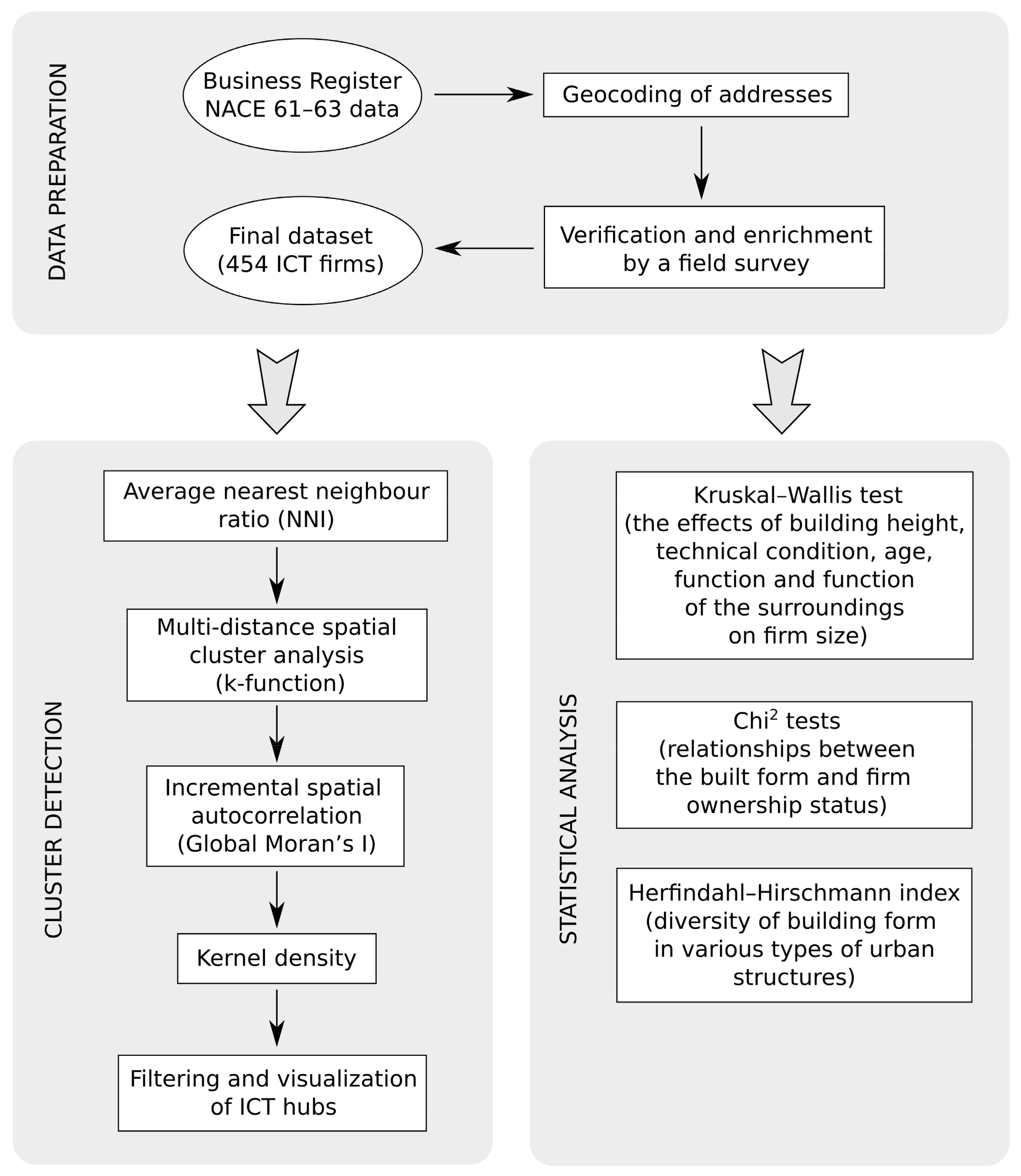
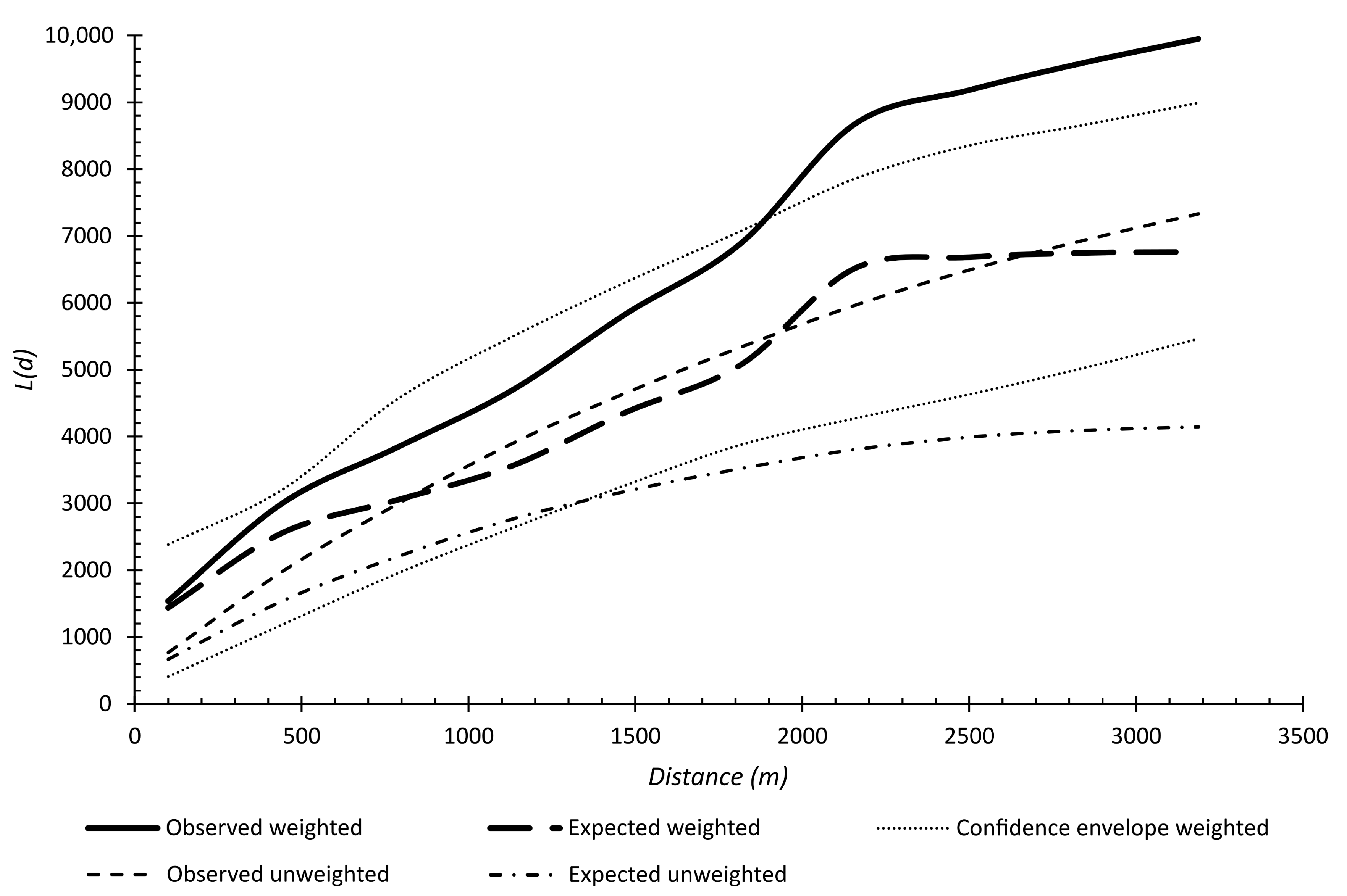
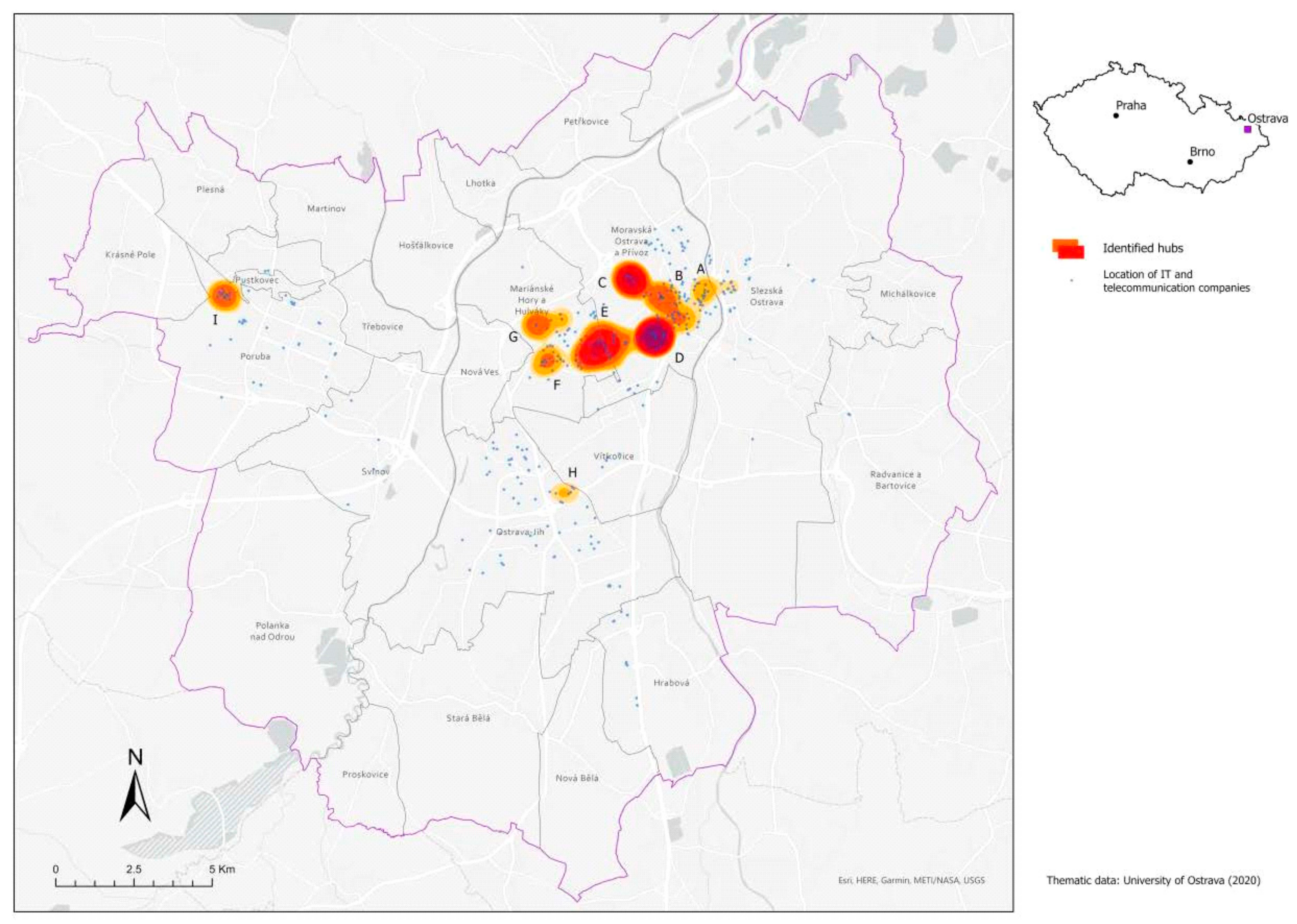


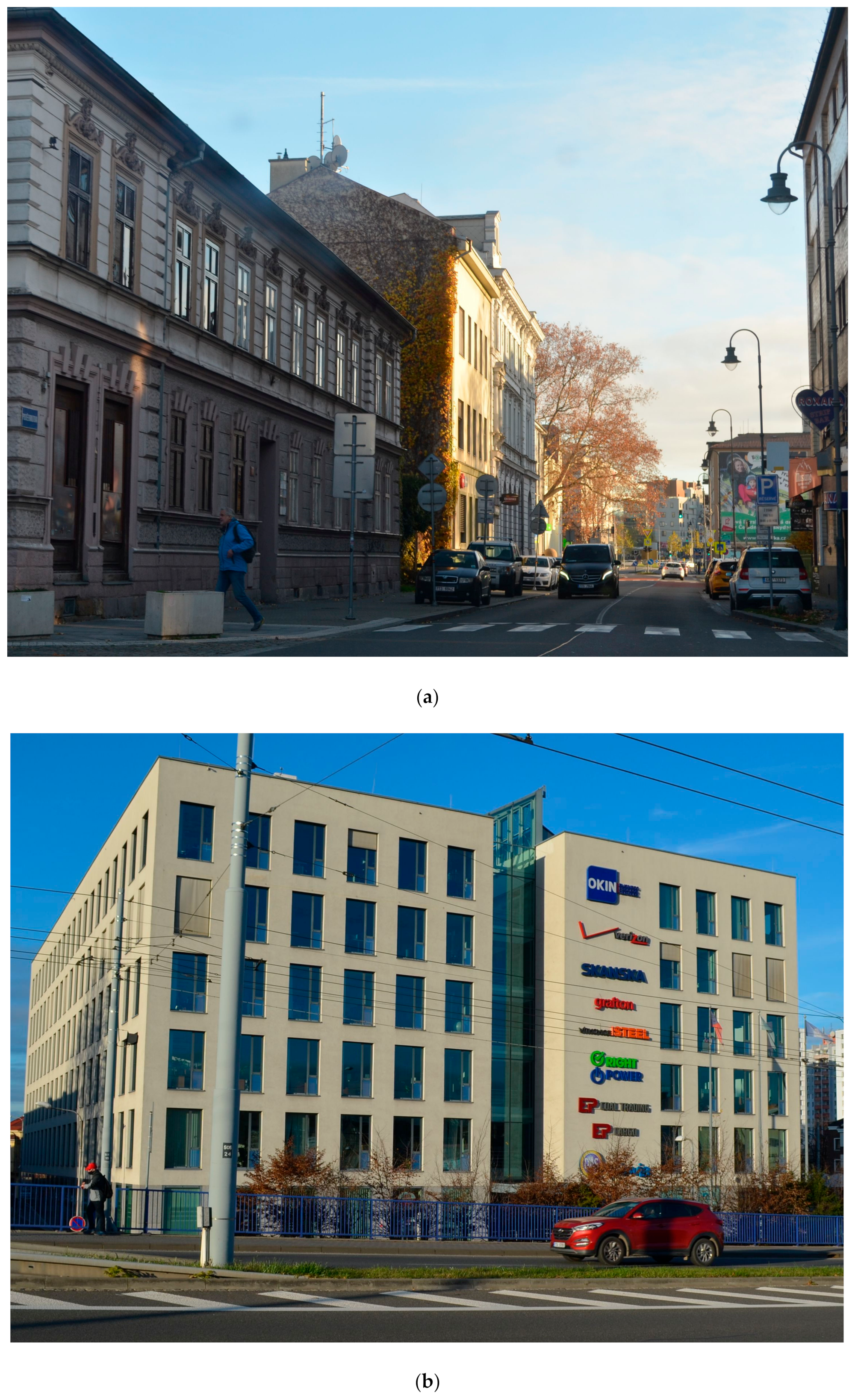
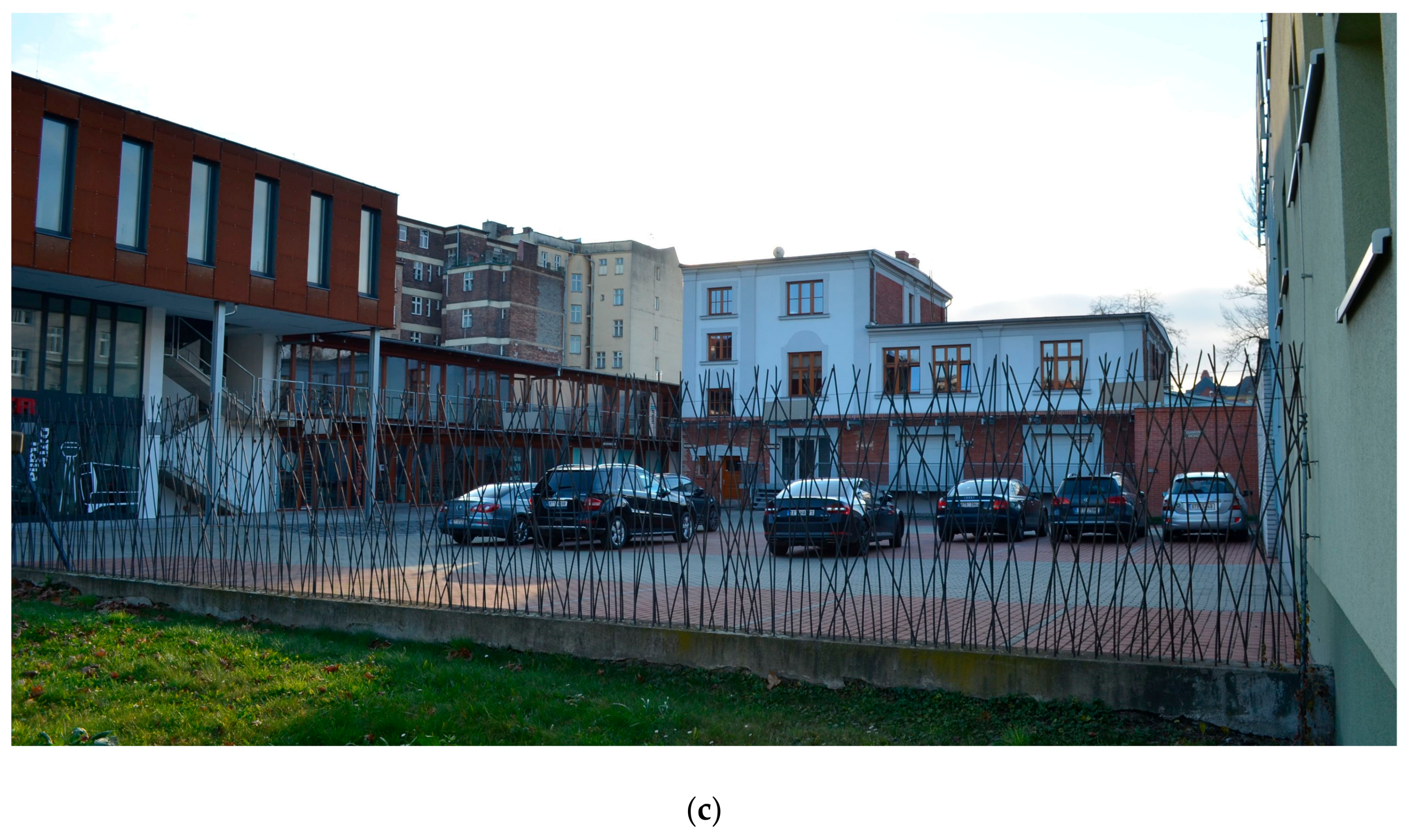
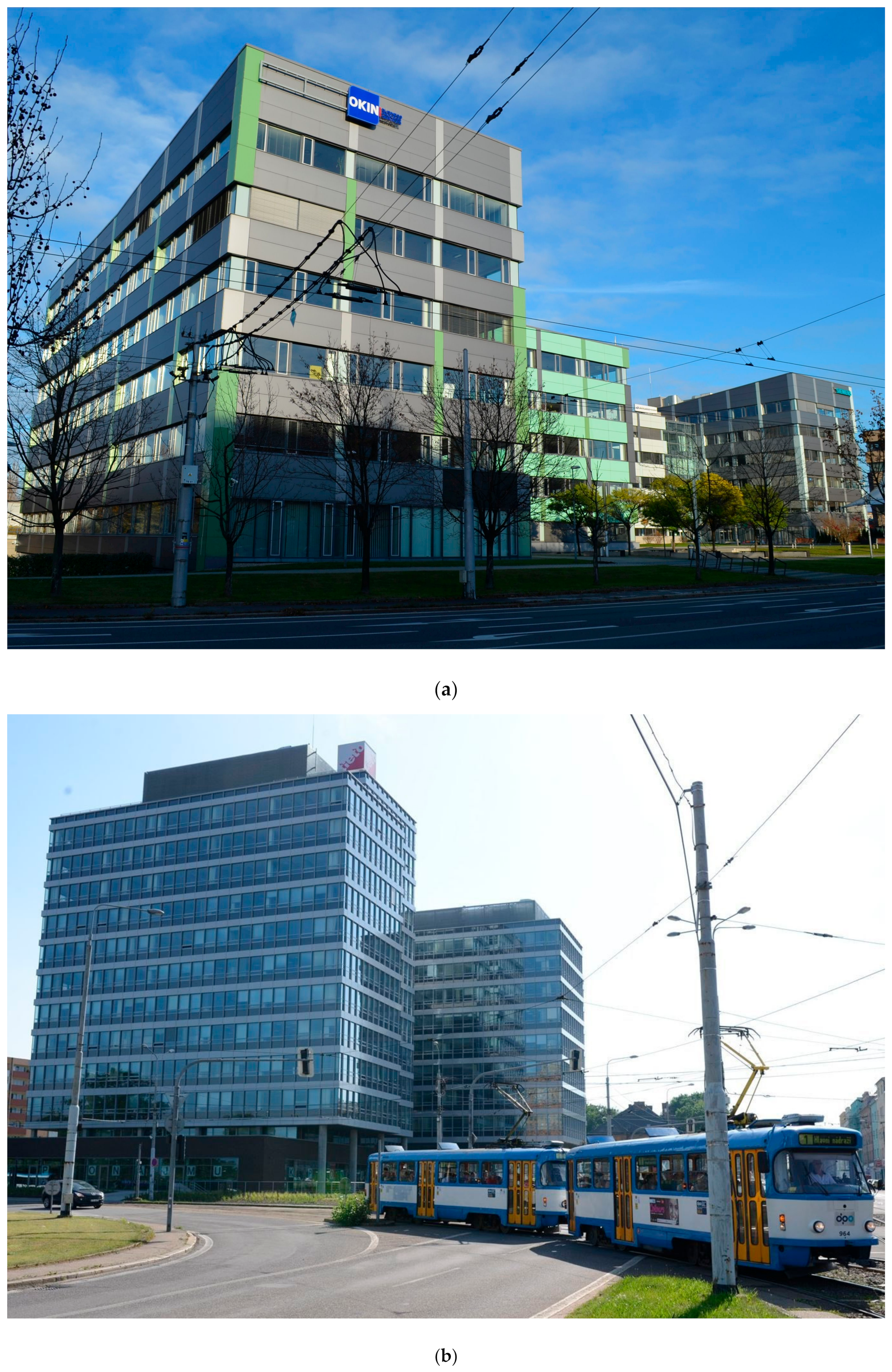
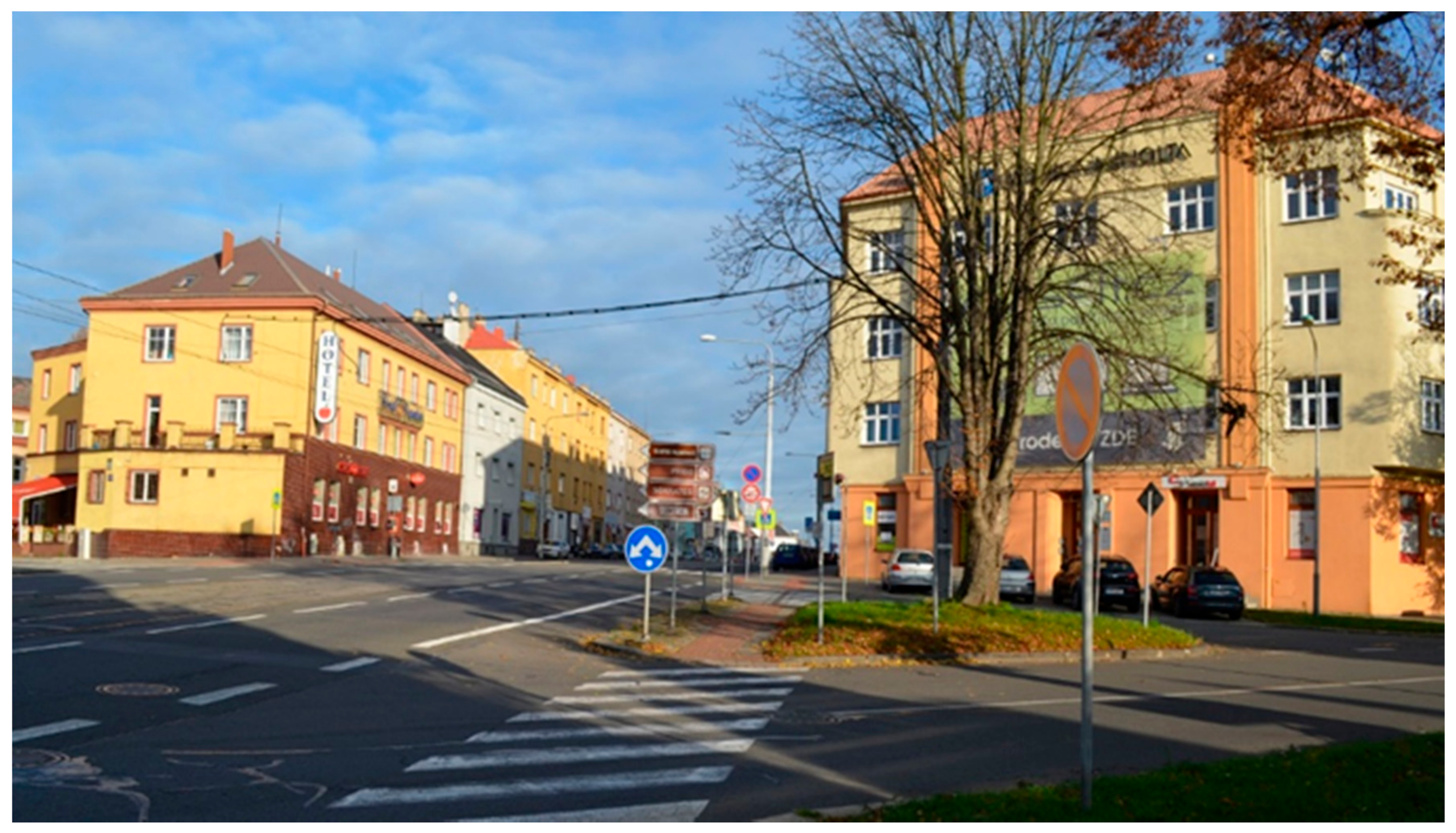



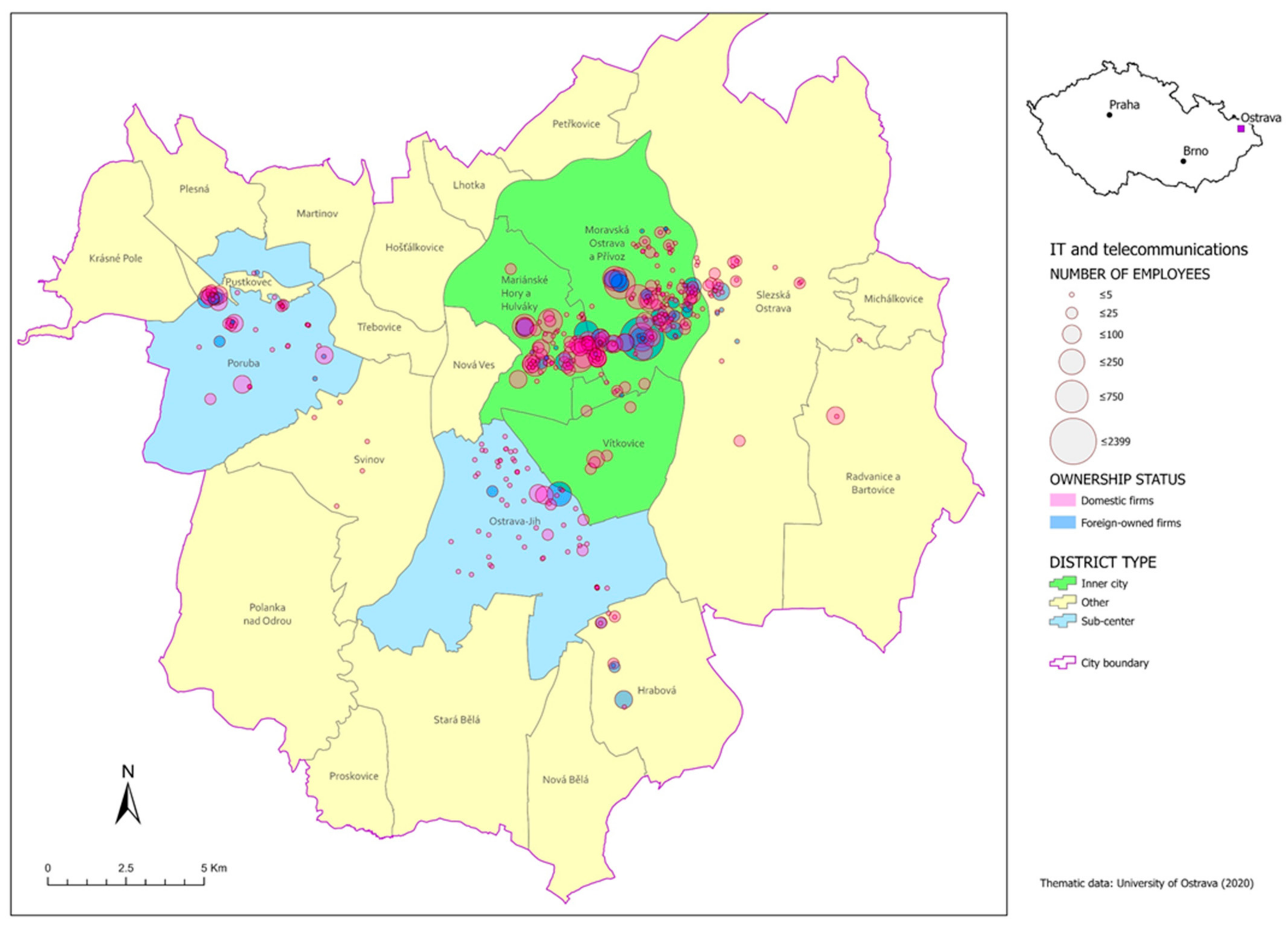
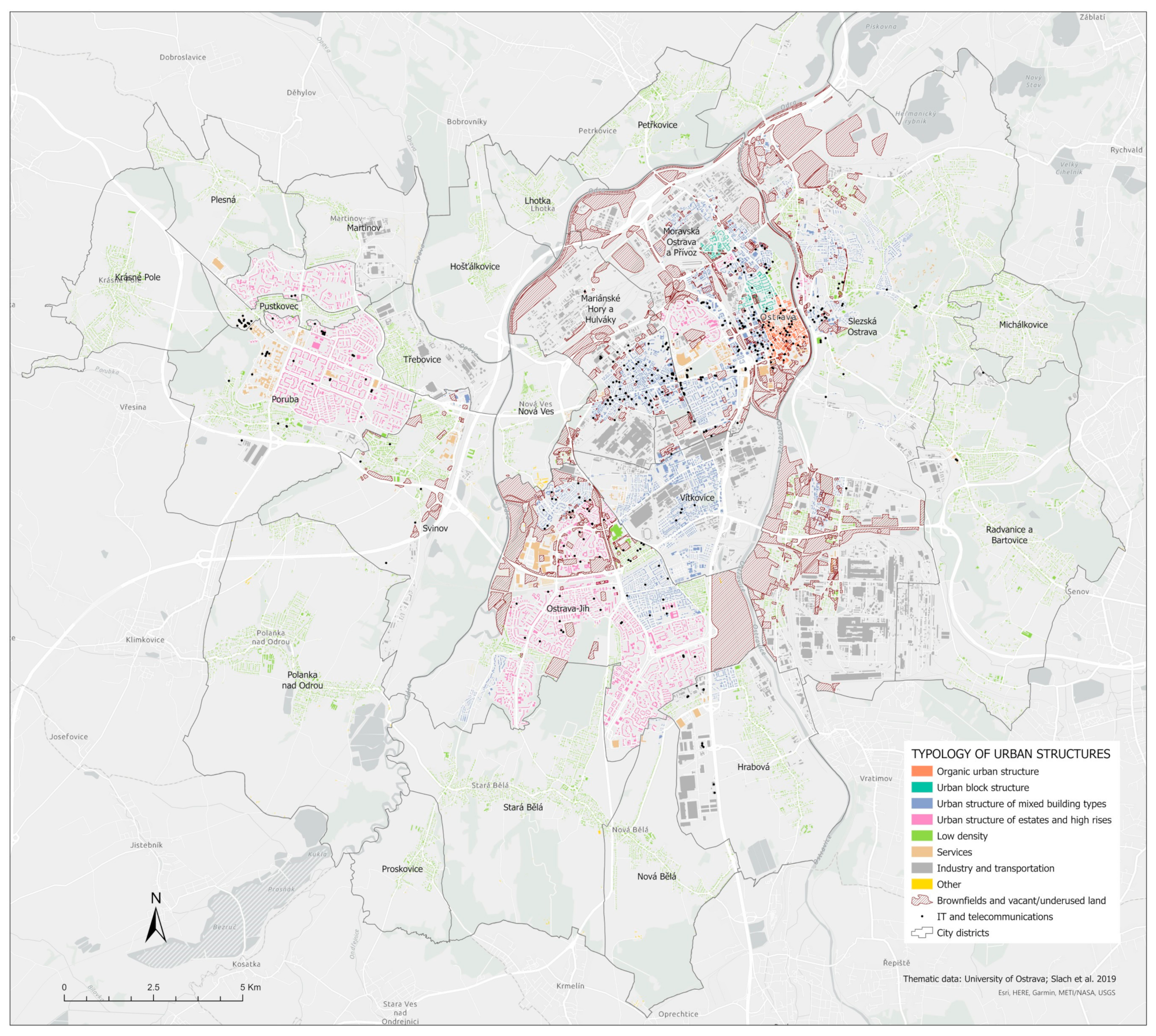
| Name | Description | Source |
|---|---|---|
| Urban structure | Type of urban structure: 1 = organic; 2 = urban blocks; 3 = estates and high rises; 4 = mixed building types; 5 = low-density structures; 6 = industry and transportation; 7 = services. | Slach et al., 2019 |
| Building height | Number of storeys: 1 = up to 2; 2 = 3 to 4; 3 = 5 and more. | own survey |
| Building condition | 1 = new or completely renovated building in perfect condition; 2 = partly renovated building; 3 = building in bad technical condition. | own survey |
| Building age | 1 = built before 1945; 2 = built between 1945 and 1989; 3 = built since 1990. | own survey |
| Building functions | 1 = commercial monofunctional; 2 = commercial polyfunctional; 3 = mostly residential; 4 = mix of functions. | own survey |
| Surrounding functions | 1 = residential; 2 = public services; 3 = production; 4 = vacant; 5 = mix of functions; 6 = other commercial non-production; 7 = transport and warehousing. | own survey |
| Employment | Number of persons employed (2019) | Business Register 2019 |
| Ownership status | 1 = domestic firms; 2 = foreign-owned firms; 3 = other. | Business Register 2019 |
| Number of Firms | Number of Jobs | Mean Jobs | StDev Jobs | |
|---|---|---|---|---|
| Urban structures | ||||
| organic | 43 | 367 | 8.5 | 15.1 |
| urban blocks | 4 | 4 | 1.0 | 0.0 |
| estates and high rises | 61 | 154 | 2.5 | 5.0 |
| mixed building types | 234 | 7253 | 31.0 | 166.2 |
| low-density structures | 33 | 323 | 9.8 | 22.0 |
| industry and transportation | 28 | 713 | 25.4 | 38.5 |
| services | 51 | 910 | 17.8 | 23.5 |
| Building height | ||||
| 1-2 storeys | 121 | 1534 | 12.7 | 22.0 |
| 3-4 storeys | 208 | 3289 | 15.8 | 42.7 |
| 5+ storeys | 125 | 4900 | 39.2 | 221.8 |
| Building condition | ||||
| perfect | 237 | 6944 | 29.3 | 162.3 |
| good | 201 | 2744 | 13.649 | 41.1 |
| before renovation | 16 | 35 | 2.156 | 1.8 |
| Building age | ||||
| before 1945 | 58 | 740 | 12.8 | 20.8 |
| 1945-1989 | 276 | 3092 | 11.2 | 35.8 |
| since 1990 | 120 | 5891 | 49.1 | 226.2 |
| Building function | ||||
| commercial monofunctional | 67 | 1196 | 17.8 | 25.6 |
| commercial polyfunctional | 243 | 7926 | 32.6 | 162.9 |
| residential | 135 | 362 | 2.7 | 7.4 |
| public services | 3 | 5 | 1.5 | 0.9 |
| mix of functions | 5 | 219 | 43.8 | 90.8 |
| other | 1 | 15 | 15.0 | 0.0 |
| Surroundings function | ||||
| residential | 128 | 968 | 7.6 | 21.5 |
| manufacturing or other production | 8 | 403 | 50.3 | 49.5 |
| transport and warehousing | 4 | 57 | 14.1 | 23.9 |
| public services | 29 | 505 | 17.4 | 26.1 |
| other commercial non-production function | 38 | 531 | 14.0 | 17.4 |
| mix of functions | 244 | 7250 | 29.7 | 162.7 |
| All firms | 454 | 9722 | 21.4 | 120.6 |
| Urban Structure | Area (km2) | ICT Firm Density | ICT Jobs Density |
|---|---|---|---|
| Organic urban structure | 0.67 | 64.4 | 550.0 |
| Urban block structure | 0.66 | 6.0 | 6.0 |
| Urban structure of estates and high rises | 14.74 | 4.1 | 10.4 |
| Urban structure of mixed building types | 16.51 | 14.2 | 439.3 |
| Low-density structures | 82.02 | 0.4 | 3.9 |
| Industry and transportation | 39.00 | 0.7 | 18.3 |
| Services | 4.15 | 12.3 | 219.4 |
| Total | 157.75 | 2.9 | 61.6 |
| Null Hypothesis | Test | p-Value | Decision |
|---|---|---|---|
| The distribution of Employment is the same across categories of Urban structure. | Kruskal–Wallis | 0.001 | reject |
| The distribution of Employment is the same across categories of Building height. | Kruskal–Wallis | 0.188 | retain |
| The distribution of Employment is the same across categories of Building condition. | Kruskal–Wallis | <0.001 | reject |
| The distribution of Employment is the same across categories of Building age. | Kruskal–Wallis | <0.01 | reject |
| The distribution of Employment is the same across categories of Building function. | Kruskal–Wallis | <0.001 | reject |
| The distribution of Employment is the same across categories of Surroundings function. | Kruskal–Wallis | <0.001 | reject |
| Variables Urban structure and Firm ownership are statistically independent. | Chi2 test | <0.001 | reject |
| Variables Building height and Firm ownership are statistically independent. | Chi2 test | <0.001 | reject |
| Variables Building condition and Firm ownership are statistically independent. | Chi2 test | 0.419 | retain |
| Variables Building age and Firm ownership are statistically independent. | Chi2 test | <0.001 | reject |
| Variables Building functions and Firm ownership are statistically independent. | Chi2 test | <0.001 | reject |
| Variables Surroundings function and Firm ownership are statistically independent. | Chi2 test | <0.001 | reject |
Publisher’s Note: MDPI stays neutral with regard to jurisdictional claims in published maps and institutional affiliations. |
© 2021 by the authors. Licensee MDPI, Basel, Switzerland. This article is an open access article distributed under the terms and conditions of the Creative Commons Attribution (CC BY) license (https://creativecommons.org/licenses/by/4.0/).
Share and Cite
Ženka, J.; Krtička, L.; Paszová, L.; Pundová, T.; Rudincová, K.; Šťastná, S.; Svetlíková, V.; Matula, J. Micro-Geographies of Information and Communication Technology Firms in a Shrinking Medium-Sized Industrial City of Ostrava (Czechia). Land 2021, 10, 695. https://doi.org/10.3390/land10070695
Ženka J, Krtička L, Paszová L, Pundová T, Rudincová K, Šťastná S, Svetlíková V, Matula J. Micro-Geographies of Information and Communication Technology Firms in a Shrinking Medium-Sized Industrial City of Ostrava (Czechia). Land. 2021; 10(7):695. https://doi.org/10.3390/land10070695
Chicago/Turabian StyleŽenka, Jan, Luděk Krtička, Lenka Paszová, Tereza Pundová, Kateřina Rudincová, Simona Šťastná, Veronika Svetlíková, and Jan Matula. 2021. "Micro-Geographies of Information and Communication Technology Firms in a Shrinking Medium-Sized Industrial City of Ostrava (Czechia)" Land 10, no. 7: 695. https://doi.org/10.3390/land10070695
APA StyleŽenka, J., Krtička, L., Paszová, L., Pundová, T., Rudincová, K., Šťastná, S., Svetlíková, V., & Matula, J. (2021). Micro-Geographies of Information and Communication Technology Firms in a Shrinking Medium-Sized Industrial City of Ostrava (Czechia). Land, 10(7), 695. https://doi.org/10.3390/land10070695






